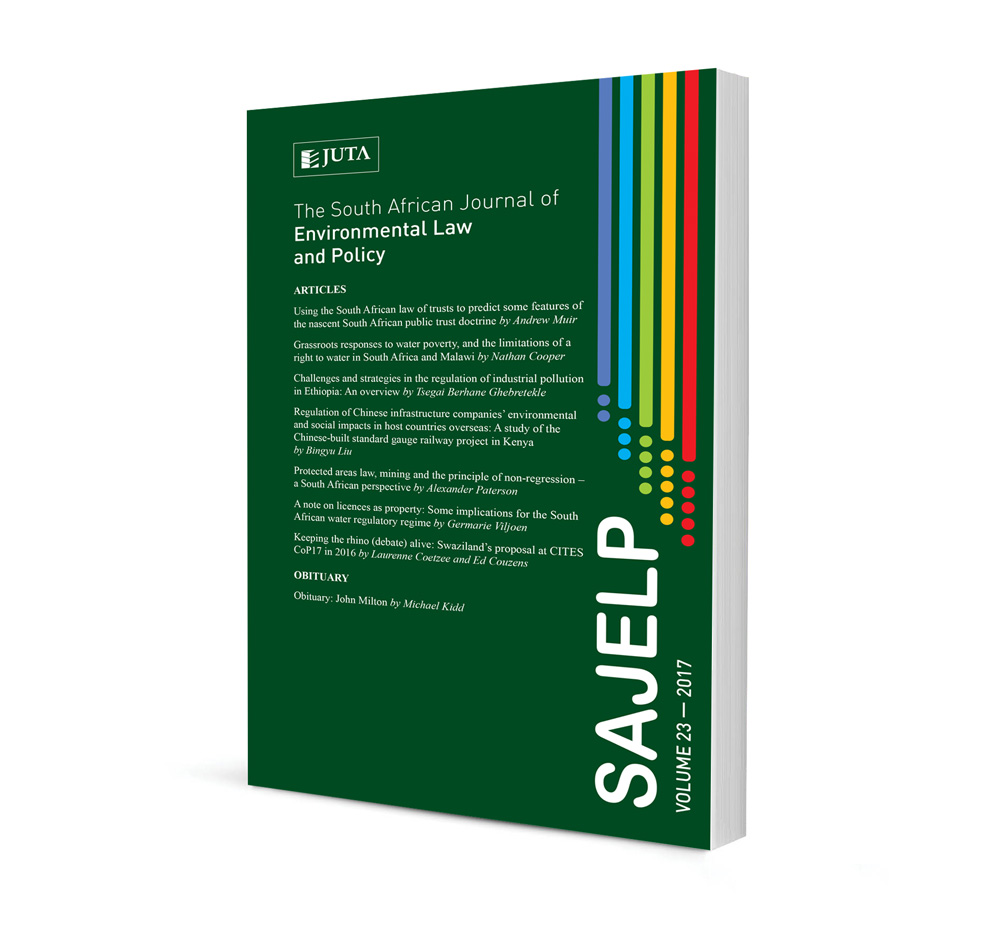
Protected areas law, mining and the principle of non-regression – a South African perspective
Authors Alexander Paterson
ISSN: 2616-8499
Affiliations: Professor, Institute of Marine and Environmental Law, Faculty of Law, University of Cape Town
Source: South African Journal of Environmental Law and Policy 2017, p. 142 – 194
Abstract
Protected areas provide numerous essential ecological, climatic, cultural, social and economic functions. Not surprisingly, the international community has set targets for both protected areas coverage and management effectiveness, crucially reflected in Aichi Target 11 agreed to by parties to the Convention on Biological Diversity in 2010. South Africa is some way off meeting its domestic contribution towards the attainment of these targets by the 2020 deadline. The government can ill afford to allow the current coverage or management effectiveness of its protected areas to regress in any manner. However, if recent events are anything to go by, the above reality is not shared by all sectors of the South African government. The past few years have seen the controversial grant of prospecting and mining rights within or in close proximity to several of South Africa’s protected areas. These mining activities hold significant potential to regress the conservation objectives of protected areas. This notion of regression is subject to increasing attention of legal scholars, advocating for recognition of the principle of non-regression as a new principle of environmental law; and highlighting the key role it could play in both halting the ‘systematic regression’ of biodiversity laws and promoting the attainment of global and domestic biodiversity targets, including Aichi Target 11. Within this context, the article explores the extent to which the principle of non-regression has, or perhaps could further, influence the form, content, interpretation and application of South Africa’s protected areas legislation with a view to precluding the regressive impact of mining activities on the country’s terrestrial protected areas.